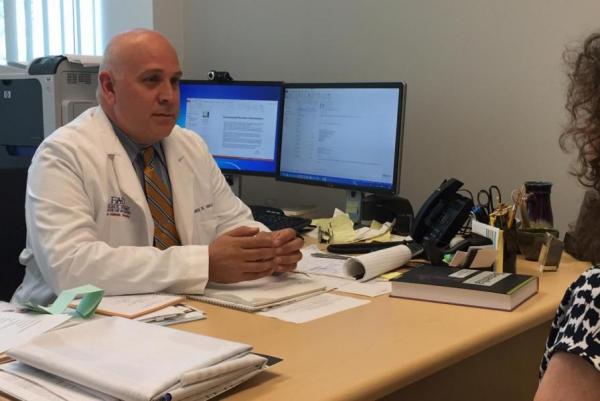
BOCA RATON, Fla., Oct. 26 (UPI) — A three-minute survey may help prevent misdiagnosis of Lewy Body disease — the second most common form of dementia after Alzheimer’s disease — which causes losses in cognitive function, mobility and behavior.
The Lewy Body Composite Risk Score, or LBCRS, a 10-question survey based on the signs and symptoms of LBD, as well as Parkinson’s Disease Dementia.
Dr. James Galvin, who developed the survey at Florida Atlantic University, said the survey not only could increase the ability of doctors to diagnose LBD, but will also help with future clinical trials and studies for its treatment and prevention.
The 10-question survey includes questions about movement, rigidity in the extremities, acting out dreams, hallucinations, sleep, stability and tremors. LBD diagnoses can often be delayed up to 18 months because of difficulty to recognize the symptoms.
“Most patients never receive an evaluation by a neurologist skilled in the diagnosis of Lewy body dementia, and significant delays and misdiagnoses occur in most patients with this disease,” Galvin, a professor of clinical biomedical science, said in a press release. “This new tool has the potential to provide a clearer, more accurate picture for those patients who are unable to be seen by specialists, hastening the correct diagnosis and reducing the strain and burden placed on patients and caregivers.”
The LBCRS was developed using autopsy-verified cases of the disease and then compared to current gold standard diagnosis methods with 256 living patients. The survey was given to patients in a real-world clinical setting using patients that were referred to the study from the surrounding community, not recruited specifically for it.
The patients’ caregivers completed evaluations on the severity of symptoms they observed, and then each patient was given a 30-minute diagnostic test for cognitive status. After other methods and rating scales had been completed, the LBCRS was completed.
Compared to standard tests, Galvin’s diagnostic was 96.8 percent accurate at telling the difference between LBD and Alzheimer’s disease, with sensitivity of 90 percent and specificity of 87 percent.






